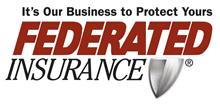The following was provided by SMACNA Premier Partner Federated Insurance

While businesses face different dangers depending on their region of the country, one thing is constant: Preparation is key. Coming up with a robust plan is your best strategy for helping keep your employees and your business safe in the event of a disaster.
Storms carry with them a list of potential hazards. The Midwest and Plains states are particularly susceptible to tornadoes; hilly or mountainous regions are open to landslides; and every region can be hit hard by heavy rains, strong winds and dangerous electrical storms. Make sure you know your area’s hazards and formulate a plan to escape or take shelter for each possibility.
Be Prepared
The safety of your employees and customers is a priority. Your plan should emphasize getting as many people as possible out of harm’s way, whether that be taking shelter in the safest room in the building, or evacuating when possible.
If your plan is to take shelter from a tornado, for example, are you sure the shelter room is strong enough to withstand an assault from a high‐intensity storm? Have you planned for the possibility that the nearest exit is blocked?
After you’ve created and refined your plan, share it with your employees and post it in a visible spot. The plan is no good if people don’t know it exists and where it is.
Protect Your Business
Fortify your building if you can. Board up the windows. Lay sandbags to divert flood water. Any work you can safely perform will help.
Since much of your inventory is mobile, identify situations that will allow you to move it to a safer location — either to higher ground in the case of flooding when there is advance warning, or to an indoor storage location when hail or strong winds threaten.
Evacuating your stock can be an expensive endeavor, but your insurance policy might cover expenses related to moving or storage to prevent loss or damage. Review your policy or get in touch with your insurance professional to find out if your policy includes this provision.
Review your insurance policy so you understand what sorts of damage are covered, and under what circumstances. Don’t let the surprise of an uninsured loss add to an already stressful situation.
Shared Losses
Direct damage to your building and inventory isn’t the only danger. A storm that comes nowhere near your location can still affect the health of your business. Think about your suppliers. If their location was hit by a storm and they were unable to provide the supplies you need to do business — even if only temporarily — would your business’s bottom line be impacted?
Ask your insurance professional about business income from dependent properties coverage. This coverage helps make up income that you lose because a partner, such as a supplier, is unable to provide a service you rely on because of a physical loss or damage to property.
This coverage does not always automatically come with a policy, so check your coverage and consult an insurance professional to explore this type of protection.
Ongoing Work
Disaster preparedness is not a simple topic. It’s multifaceted and goes far beyond what was discussed above. As a business owner, you should constantly be thinking about how you can improve your plan.
The Insurance Institute for Business and Home Safety (IBHS) can help. Open for Business‐EZ (OFB‐EZ) is an extensive guide to disaster preparedness, which covers a range of topics that would help any business owner.
Severe weather can be frightening, but with some forethought, you can get through it. And if you escape damage or loss, all that work isn’t for nothing. You have a great start for the next storm season.